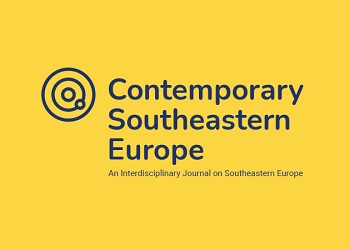Dimensions of Europe - Dimensions of Europeanization
Dimensions of Europe - Dimensions of Europeanization
Author(s): Maria TodorovaSubject(s): Politics / Political Sciences, Cultural Anthropology / Ethnology
Published by: Universität Graz
Keywords: Europeanization; Periphery; Backwardness; Corruption;
Summary/Abstract: Some years ago, the Romanian writer Mircea Cartarescu was approached by a German publisher at the Frankfurt book fair, who said he was interested in Eastern European writers. Cartarescu immediately responded that he did not consider himself an Eastern European writer. “Of course,” the publisher conceded, “as a Romanian you are from Southeastern Europe.”1 For Cartarescu this simple spacing had the following direct message: “Stay where you are,” the publisher was telling me in a friendly manner. “Stay in your own ghetto. Describe your tiny chunk of (South) Eastern European history. Write about your Securitate, about your Ceausescu, about your People’s House. About your dogs, your homeless children, your Gypsies. Be proud with your dissidence during the communist days. Leave it to us to write about love, death, happiness, agony, and ecstasy. Leave it to us to create the avant-garde, to innovate, to breathe cultural normality. Your only chance here is to describe your small exotic world for some small publishing house that might accept you… Just choose: either you confirm our clichés or you disappear.” Cartarescu was furious. He could not accept the triple division of Europe into Western, Central, and Eastern, let alone the Southeastern subdivision of the subdivision. “Western Europe, Central Europe, Eastern Europe. Civilization, neurosis, chaos. Prosperity, culture, and chaos. Consciousness, subconsciousness, and chaos.” Cartarescu had read Musil, in whom he saw not Kakanien, but a prince of the European spirit. He didn’t care which country Andre Breton came from. He didn’t trace Bulgakov’s Kiev on a map. “I haven’t read Catulus, Rabelais, Cantemir, and Virginia Woolf from some geographic map,” he wrote, “but from the library, where books are arranged next to each other.” And he concluded: “There are many Europes in space and in time, in dreams and in memories, in reality and in the imagination. I claim only one of them, my Europe, easily recognizable, because it has the shape of my brain. It has this shape, because [my brain] has modeled it from the outset after itself.” How do we “Europeanize” a person such as Cartarescu who is from the “periphery”? The periphery of what? And what is a periphery
Journal: Contemporary Southeastern Europe
- Issue Year: 6/2019
- Issue No: 1
- Page Range: 10-19
- Page Count: 10
- Language: English

